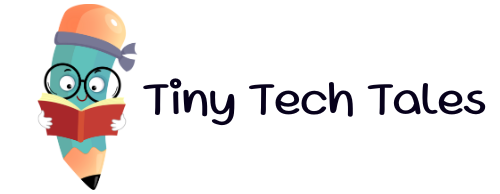
Introduction
In today’s increasingly digital world, coding has become a vital skill. It empowers individuals to understand and shape the technology that surrounds us. Recognizing the importance of introducing coding to children, educators and parents are seeking innovative and engaging ways to spark their interest in this field. One such approach that has gained popularity is coding picture books. These books combine storytelling and coding concepts to create an immersive and enjoyable learning experience for young readers. In this article, we will explore the benefits of coding picture books, their features, and how they can be effectively used in educational settings.
Benefits of Coding Picture Books
Coding picture books offer a multitude of benefits for children. Firstly, they enhance problem-solving skills. Coding requires logical thinking and the ability to break down complex problems into smaller, manageable parts. By engaging with coding picture books, children learn to think critically and develop innovative solutions. Through captivating narratives and relatable characters, these books present coding challenges in a way that encourages young readers to apply their problem-solving skills.
Secondly, coding picture books foster creativity and critical thinking. Coding is a creative process that encourages individuals to think outside the box and come up with unique solutions. Picture books about coding stimulate children’s imagination and encourage them to explore different possibilities. They provide a safe and supportive environment for children to experiment with ideas, nurturing their creativity and enhancing their ability to think critically.
Another significant benefit of coding picture books is their role in building a strong foundation for future coding education. These books serve as a gentle introduction to coding concepts and terminology, preparing children for more advanced coding education as they progress in their learning journey. By familiarizing themselves with coding early on, children develop a solid understanding of the basic principles, setting them up for success in future coding endeavors.
Features of Effective Coding Picture Books
To be effective in engaging young readers, coding picture books should possess certain features. Engaging storytelling is essential. Compelling narratives and relatable characters captivate children’s attention, making the learning experience enjoyable and memorable. Through storytelling, coding concepts are presented in a context that is relatable and engaging for young readers.
Clear explanations of coding concepts are also crucial. Coding can be a complex subject, especially for young children. Therefore, coding picture books should provide simple and concise explanations of coding concepts, ensuring children can grasp the fundamental ideas without confusion. These explanations should be age-appropriate and presented in a manner that is accessible and relatable to young readers.
Interactive elements and activities are another key feature of effective coding picture books. These books often include puzzles, quizzes, and hands-on activities that encourage children to actively participate and apply their coding knowledge. By incorporating interactive elements, coding picture books create an engaging and interactive learning experience, allowing children to practice and reinforce their understanding of coding concepts.
Using Coding Picture Books in Educational Settings
Coding picture books have a significant role to play in educational settings. Teachers can incorporate these books into their lesson plans, using them as a starting point to introduce coding concepts in a relatable and engaging way. By using coding picture books, educators can stimulate discussions and facilitate hands-on activities that reinforce learning. These books can serve as a catalyst for further exploration and can be a valuable resource in the classroom.
Furthermore, coding picture books can supplement existing coding curricula. They provide additional examples and alternative explanations, reinforcing understanding and promoting creativity in coding education. By incorporating coding picture books into the curriculum, educators can offer different perspectives on coding concepts, catering to the diverse learning styles and preferences of their students.
Coding picture books also offer an excellent opportunity for parent-child interaction. Parents can use these books as a tool to engage with their children and spark conversations about coding. Reading together and exploring coding concepts can strengthen the parent-child bond while nurturing a love for learning and technology in children. This interaction fosters a supportive learning environment and creates lasting memories.
Conclusion
Coding picture books provide an engaging and effective pathway to introduce children to the world of coding. Through captivating storytelling, clear explanations, and interactive elements, these books enhance problem-solving skills, foster creativity and critical thinking, and build a strong foundation for future coding education. Whether used in classrooms or at home, coding picture books create an enjoyable and accessible learning experience for young learners, igniting their curiosity and passion for coding.
If you found this article useful, we also have a couple of picture books to offer at TinyTechTales. Check them out in the Books section.
